Cat toilet training has garnered attention as a potential solution for pet owners seeking a seamless waste management system for their feline companions. However, the process involves a series of considerations that extend beyond mere convenience.
Experts in the field offer valuable insights into the nuances of cat toilet training, shedding light on its impact on cats' behavior and well-being. By understanding the recommendations provided by professionals, pet owners can navigate this practice with a clearer perspective.
The exploration of expert insights on cat toilet training presents a comprehensive view that prompts further contemplation on the subject.
Key Takeaways
- Consider your cat's health and comfort before attempting toilet training.
- Respect natural instincts to scratch and cover waste for your cat's well-being.
- Regular monitoring of bathroom habits aids in early detection of health issues.
- Consult a veterinarian to assess if toilet training is suitable for your cat.
Benefits of Cat Toilet Training
Cat toilet training offers numerous advantages that can simplify cat ownership and enhance the living environment for both cats and their owners. By eliminating the need for cleaning a litter box regularly, owners save time and effort. Additionally, the cost of purchasing litter is eliminated, resulting in long-term savings.
This method, popularized after being featured on Shark Tank in 2011 and showcased on platforms like TikTok, promotes responsible pet ownership by maintaining cleanliness. Not only does toilet training benefit owners, but it also provides cats with a cleaner and more hygienic bathroom experience.
Popularity of Cat Toilet Training
The increasing adoption of cat toilet training techniques has garnered significant attention within the pet ownership community.
- Pet owners appreciate the convenience and cleanliness of toilet-trained cats.
- Social media platforms showcase successful cat toilet training stories, inspiring others to try it.
- The ease of training cats to use the toilet appeals to busy individuals seeking a low-maintenance pet solution.
As more people witness the benefits of cat toilet training, its popularity continues to rise. Online forums and communities dedicated to cat care often discuss the advantages and challenges of this method. By exploring the experiences of other cat owners, individuals can make informed decisions about whether cat toilet training is suitable for their feline companions.
Cat Toilet Training on TikTok
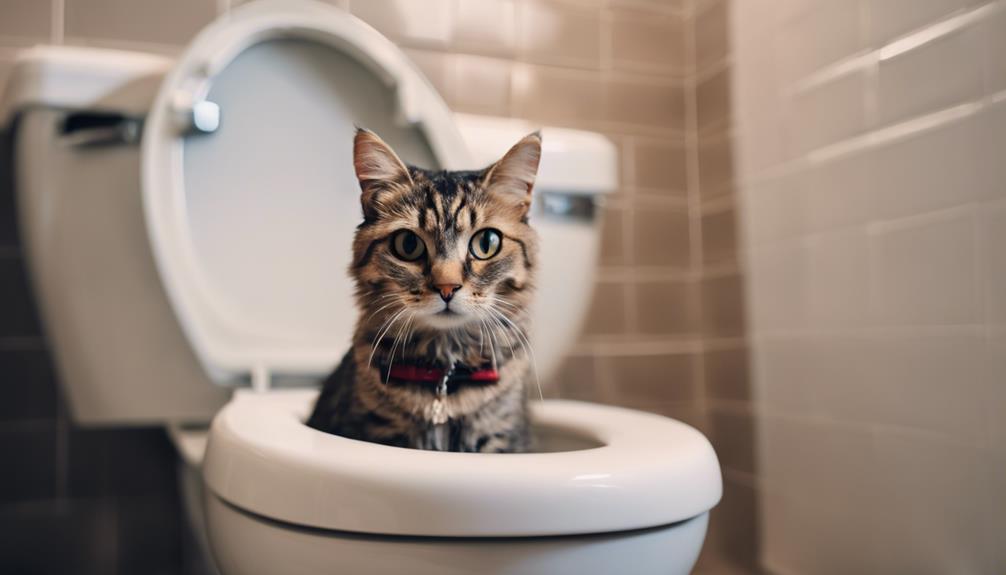
The rise of cat toilet training techniques on social media platforms, like TikTok, showcases a modern trend in pet ownership practices. Videos on TikTok have captivated audiences by showcasing cats undergoing toilet training, demonstrating the potential for feline adaptability to this unconventional behavior.
These videos provide a glimpse into the process, offering both entertainment and educational value to viewers interested in alternative pet care methods. TikTok's format allows for quick dissemination of tips and tricks, making it a popular platform for sharing cat toilet training experiences.
As viewers engage with these videos, they become part of a virtual community exploring innovative ways to interact with their pets, highlighting the evolving landscape of pet care in the digital age.
Responsible Pet Ownership Perspective
From a responsible pet owner's standpoint, ensuring the overall well-being and welfare of companion animals remains paramount.
Regular veterinary check-ups and vaccinations are essential for maintaining your cat's health and preventing diseases.
Providing a balanced diet tailored to your cat's nutritional needs is crucial for their growth and longevity.
Creating a safe and stimulating environment at home, including proper litter box maintenance and enrichment activities, is vital for your cat's physical and mental well-being.
Concerns About Cat Toilet Training
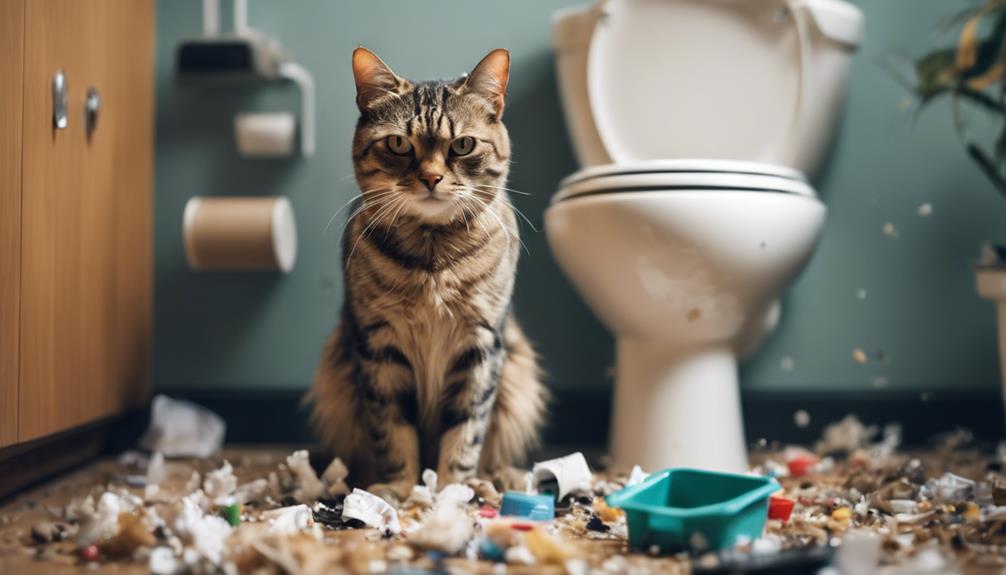
Addressing the potential drawbacks of cat toilet training involves considering various concerns related to feline behavior and well-being. One significant concern is that cats may be deprived of their natural instincts when forced to use a toilet instead of a litter box. This deprivation of behaviors like scratching and covering waste can lead to stress and potential behavioral issues, such as urinating in inappropriate places.
Additionally, toilet training may force cats into uncomfortable postures and pose a risk of falling into the toilet. Monitoring a cat's litter box output is crucial for detecting early signs of medical issues, a practice that may be compromised with toilet training. These concerns highlight the importance of weighing the potential risks before deciding to embark on cat toilet training.
Natural Behavior Deprivation
Depriving cats of their natural instincts during toilet training can lead to behavioral stress and potential issues with urination.
- Scratching Deprivation: Cats have an innate need to scratch surfaces to mark territory and keep their claws healthy.
- Covering Waste Deprivation: Cats instinctively bury their waste to conceal their presence from predators and assert territory.
- Scent Communication Deprivation: Cats use urine and feces to communicate with other cats. Blocking this natural behavior can lead to confusion and stress.
It is essential to consider these natural behaviors when toilet training your cat to ensure their mental and physical well-being.
Discomfort and Postures
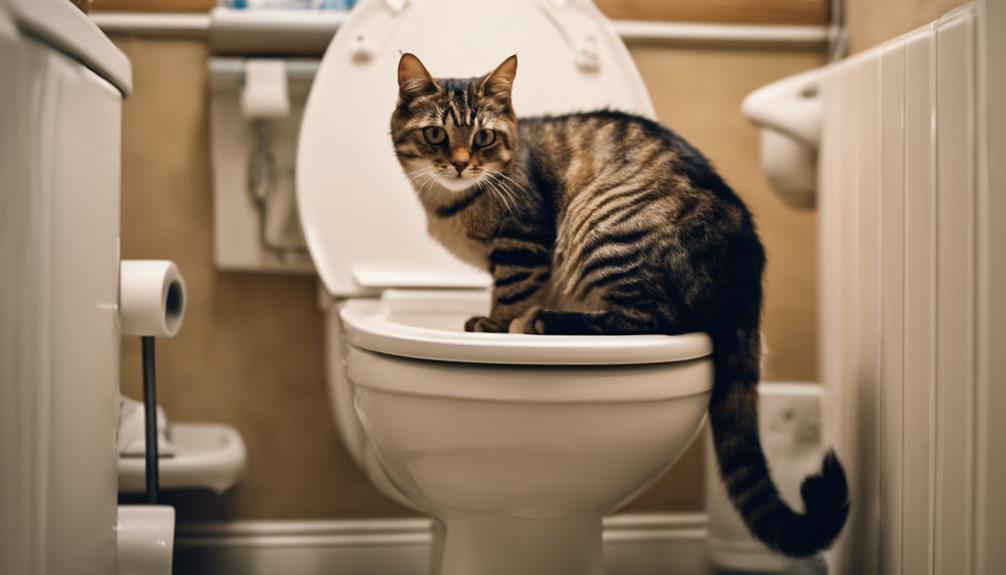
Cat toilet training may lead to discomfort for felines due to the unnatural postures required during the process. Cats are often accustomed to squatting or digging while eliminating, behaviors that differ from balancing on a toilet seat.
This adjustment can strain their muscles and joints, especially for older or less agile cats. The physical discomfort may cause stress and reluctance to use the toilet for elimination.
Additionally, some cats may find it challenging to maintain their balance, increasing the risk of accidents or falling into the toilet. Understanding and addressing these postural challenges are crucial when considering toilet training for your cat to ensure their comfort and well-being throughout the process.
Stress and Inappropriate Urination
Stress and inappropriate urination are common concerns that may arise when considering cat toilet training. When embarking on this journey with your feline friend, it's crucial to be aware of the following:
- Behavioral Changes: Cats may exhibit stress-related behaviors like urinating outside the litter box when faced with the unfamiliarity of using a toilet.
- Environmental Factors: Changes in the home environment, such as the introduction of a new toilet training system, can trigger stress in cats and lead to inappropriate urination.
- Consultation: Seeking advice from a veterinarian or animal behaviorist can help address underlying stressors and provide guidance on managing inappropriate urination during the toilet training process.
Risk of Falling
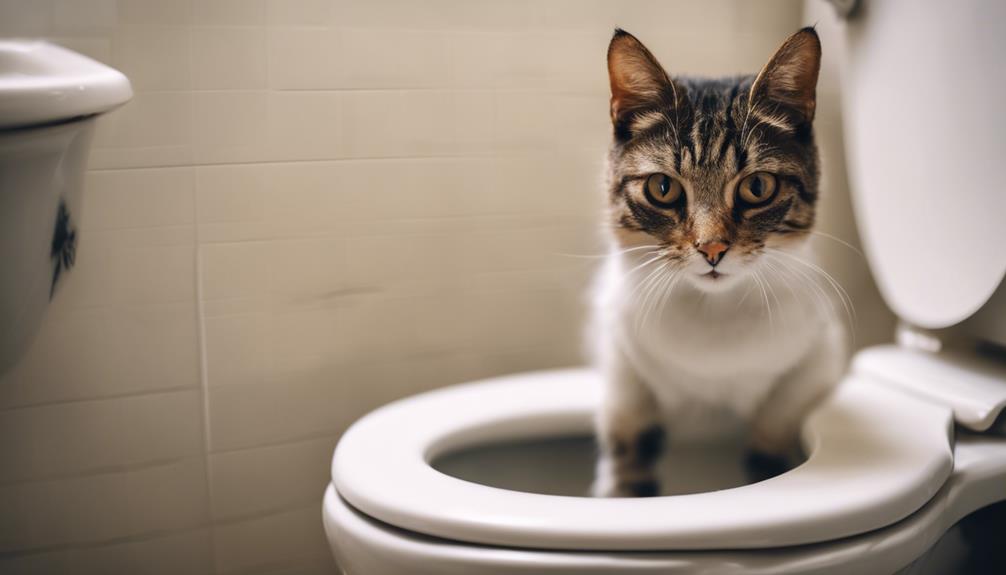
When considering cat toilet training, one significant concern to address is the potential risk of cats falling into the toilet. Cats, known for their agility and balance, may misstep or lose their footing while attempting to use the toilet, leading to accidents.
This risk is particularly heightened during the initial stages of training when cats are still adjusting to the new routine and environment.
To mitigate this danger, pet owners should closely monitor their cats during the training process, ensuring that the toilet lid is securely closed when not in use. Additionally, providing stable platforms or steps near the toilet can help cats access the seat more easily and reduce the likelihood of falls, safeguarding their well-being throughout the training period.
Health Monitoring Importance
To ensure the overall well-being of your feline companion, diligent health monitoring remains a critical aspect of cat ownership, particularly in the context of toilet training.
- Regularly observe your cat's bathroom habits: Pay attention to changes in frequency, consistency, or volume of urine and feces.
- Monitor for signs of discomfort: Watch for any indicators of pain or difficulty during elimination.
- Seek veterinary advice promptly: If you notice any concerning changes in your cat's bathroom behavior, consult a veterinarian for professional guidance on potential health issues.
Alternatives to Cat Toilet Training
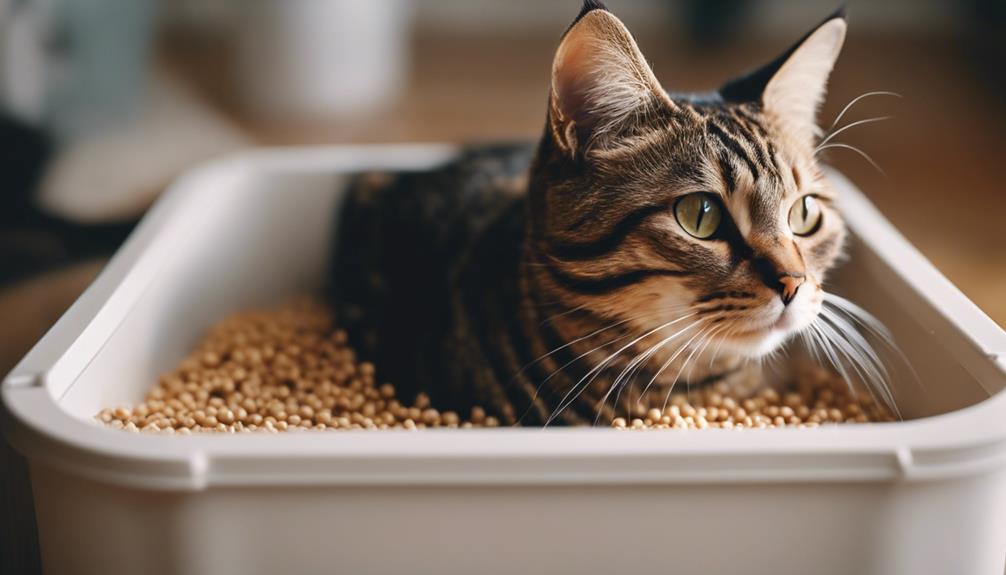
Considering alternative methods to cat toilet training can provide practical solutions for cat owners seeking to minimize the challenges associated with this training technique. Instead of toilet training, cat owners can opt for using an automatic litter box to reduce the frequency of cleaning.
Trying out dust-free litters or those with odor control can also help maintain a clean environment for your cat. Covered litter boxes or furniture-disguised enclosures offer a less obtrusive option for both you and your cat.
It's essential to remember that some cats may be intimidated by automatic litter boxes, so providing a traditional litter box alongside could be beneficial. Ultimately, choosing the right litter setup depends on your cat's comfort and well-being.
Automatic Litter Boxes
Exploring the efficacy of automatic litter boxes in simplifying cat waste management.
- Convenience: Automatic litter boxes offer the convenience of hands-free waste removal, reducing the frequency of manual scooping.
- Odor Control: Many automatic litter boxes come equipped with odor control features, keeping your home smelling fresh and clean.
- Monitoring: Some models of automatic litter boxes track your cat's bathroom habits, providing insight into their health and potential issues.
These innovative devices can streamline the chore of litter box maintenance while ensuring a hygienic environment for your feline friend.
Dust-Free and Odor Control Litters
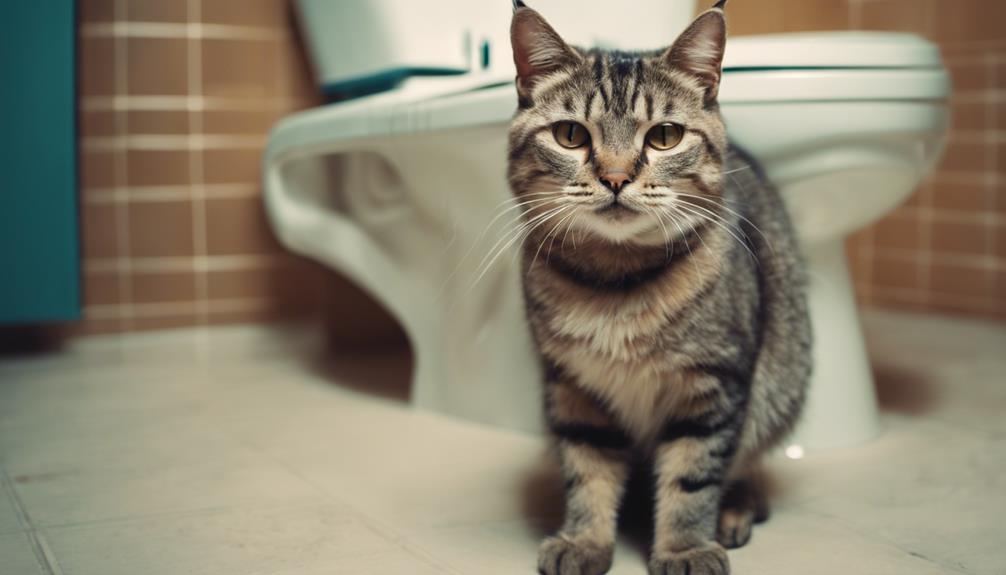
Automatic litter boxes have revolutionized cat waste management, but for cat owners seeking alternatives, the focus shifts to selecting dust-free and odor control litters for enhanced cleanliness and convenience.
Dust-free litters are essential for both cats and owners with respiratory sensitivities, ensuring a healthier environment. These litters minimize tracking around the house, offering a cleaner living space.
Odor control litters work effectively in reducing unpleasant smells, maintaining a fresh atmosphere in your home. By choosing litters with superior odor control properties, cat owners can enjoy a more pleasant experience when managing their feline companions' waste.
Prioritizing dust-free and odor control litters not only benefits your cat's well-being but also enhances the overall hygiene and comfort of your household.
Enclosures and Disguised Boxes
One effective solution for maintaining a discreet and aesthetically pleasing litter setup is through utilizing enclosures and disguised boxes.
- Enclosures: Enclosures offer privacy and help contain litter scatter, providing your cat with a secluded space for their needs.
- Disguised Boxes: Disguised litter boxes come in various designs, such as furniture pieces or planters, seamlessly blending into your home decor while serving a functional purpose.
- Odor Control: Many enclosures and disguised boxes are equipped with odor control features, ensuring your living space remains fresh and inviting despite your feline friend's bathroom activities.
These options not only cater to your cat's needs but also cater to your desire for a harmonious living environment.
Conclusion
In conclusion, cat toilet training offers the ultimate solution for a pristine and hassle-free pet waste management system. By teaching cats to use a human toilet, pet owners can enjoy unparalleled convenience and cleanliness in their homes.
The practice revolutionizes the traditional litter box setup, elevating the pet ownership experience to a whole new level of sophistication and ease. Embracing cat toilet training is the epitome of modern pet care innovation.




